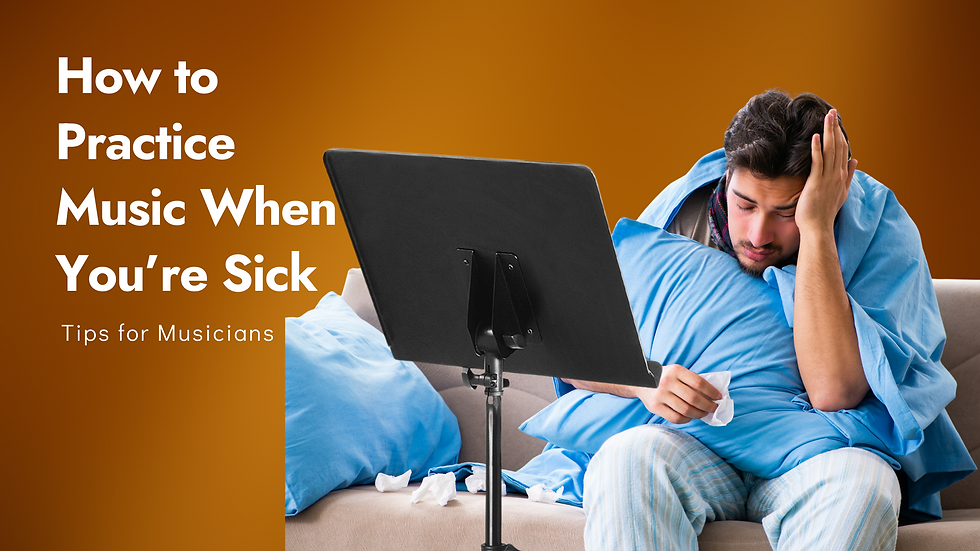The Importance of Posture and Hand Position in Piano Playing
- Taylor Fends

- Oct 24, 2024
- 4 min read

Playing the piano involves much more than pressing keys. To develop skill, comfort, and longevity as a pianist, posture and hand position are essential. They not only enhance technique and performance but also prevent strain and injury. In this blog, we'll explore The Importance of Posture and Hand Position in Piano Playing.
1. Why Posture Matters
Good posture at the piano is fundamental to effective playing. It allows your body to move freely, reducing tension and enabling better control over dynamics and articulation. Here are a few reasons why it’s crucial:
Prevents Strain and Injury: Sitting with poor posture—such as slouching or hunching your shoulders—can lead to back, neck, and wrist pain. Over time, these issues can develop into chronic problems like tendinitis or carpal tunnel syndrome.
Enhances Breathing and Endurance: Proper posture, where you sit with your back straight and shoulders relaxed, opens up your diaphragm, allowing for better breathing. This is especially important during long practice sessions or performances, as it helps you maintain focus and stamina.
Improves Control and Agility: When you're seated at the right height, with feet flat on the floor and the bench positioned correctly, you have more control over your arms and hands. Your fingers can move more freely, enabling you to execute intricate passages with precision.

2. Correct Piano Posture: The Basics
Here’s how to achieve good posture at the piano:
Bench Height: Your bench should be at a height where your elbows are slightly above the keys when your hands are on the keyboard. This promotes a natural arm and hand position.
Seat Position: Sit on the front half of the bench so that your feet rest firmly on the floor, giving you balance and allowing easy pedal access.
Back Alignment: Keep your back straight but not rigid. Avoid leaning too far forward or backward. A gentle forward tilt helps keep you engaged with the piano.
Shoulder and Arm Relaxation: Keep your shoulders down and relaxed, and avoid unnecessary tension in your arms. This allows your hands to move fluidly across the keys.
3. Hand Position: The Key to Technique
Just like posture, proper hand position is essential for developing technique and avoiding strain. The way your hands connect with the keys can significantly affect your sound and speed.
Curved Fingers: Always maintain a gentle curve in your fingers, as if holding a small ball. This natural shape gives your fingers the ability to move independently and evenly press the keys.
Thumb Position: Your thumb should rest lightly on its side and should be ready to pivot, allowing smooth transitions during scale runs or chord shifts.
Finger Independence: Avoid collapsing the knuckles, as this causes tension in your hands and reduces finger strength. Instead, aim for each finger to have its own independent strength, which will lead to better control over dynamics.

4. Why Hand Position Matters
The right hand position is critical for several reasons:
Prevents Fatigue and Tension: Poor hand placement can lead to stiffness and muscle strain, especially during challenging pieces. Keeping your hands relaxed and in a natural curve helps reduce unnecessary tension.
Improves Sound Quality: With the proper hand position, you can achieve a more consistent and refined sound. You’ll have better control over dynamics, phrasing, and articulation, leading to a more expressive performance.
Increases Finger Dexterity: Proper hand alignment helps build finger agility and strength, making it easier to play faster passages, scales, and arpeggios without fatigue or mistakes.
5. Tips for Improving Posture and Hand Position
To cultivate good habits in posture and hand position, follow these tips:
Mirror Practice: Position a mirror near your piano to check your posture and hand shape regularly. This can help correct any bad habits that may develop over time.
Use of a Metronome: Slow practice with a metronome will allow you to focus on technique without rushing, ensuring that both posture and hand position are maintained even at faster tempos.
Take Breaks: Even with perfect posture and hand positioning, it’s essential to take breaks during long practice sessions to prevent fatigue and overuse injuries.
6. The Long-Term Benefits of Proper Posture and Hand Position
Focusing on posture and hand position from the beginning will pay off in the long run. Not only will it help prevent injury, but it will also build a strong technical foundation, allowing you to play more challenging pieces with ease and confidence. Additionally, by preventing physical strain, you can enjoy a long and healthy piano-playing career, free from discomfort and pain.
The Importance of Posture and Hand Position in Piano Playing
Posture and hand position in piano playing are about more than just aesthetics; they are essential for developing proper technique, preventing injury, and enhancing musical expression. By cultivating good habits in these areas, you'll be able to unlock your full potential as a pianist, allowing for a more enjoyable and fulfilling playing experience. Remember, whether you're a beginner or an experienced player, it's never too late to improve your posture and hand position.












Comments